has 13+ years experience in web development, ecommerce, and internet marketing. He has been actively involved in the internet marketing efforts of more then 100 websites in some of the most competitive industries online. John comes up with truly off the wall ideas, and has pioneered some completely unique marketing methods and campaigns. John is active in every single aspect of the work we do: link sourcing, website analytics, conversion optimization, PPC management, CMS, CRM, database management, hosting solutions, site optimization, social media, local search, content marketing. He is our conductor and idea man, and has a reputation of being a brutally honest straight shooter. He has been in the trenches directly and understands what motivates a site owner. His driven personality works to the client's benefit as his passion fuels his desire for your success. His aggressive approach is motivating, his intuition for internet marketing is fine tuned, and his knack for link building is unparalleled. He has been published in books, numerous international trade magazines, featured in the Wall Street Journal, sat on boards of trade associations, and has been a spokesperson for Fortune 100 corporations including MSN, Microsoft, EBay and Amazon at several internet marketing industry events. John is addicted to Peets coffee, loves travel and golf, and is a workaholic except on Sunday during Steelers games.
In order to understand the rise of paid content, it’s necessary to understand the meaning of the nofollow tag and how it is used (and some would say abused) by large sites like Twitter.
The nofollow tag is used to tell some search engines (*cough*Google*cough*) that a hyperlink should not influence the link target’s search engine ranking. It was originally intended to reduce the effectiveness of search engine spam. Spam comments were the nofollow tag’s original targets: spam comments on blogs were used to get back links and try to squeeze a few drops of link juice from as many places as possible. By making comment links nofollow, the webmaster is in effect saying, “I am in no way vouching for the quality of the place this link goes. Don’t give them any of my link juice. Maybe it’s a good site, but I’m not taking chances.”
Nofollow links are not meant for preventing stuff from being indexed or for blocking access. The ways to do this are by using the robots.txt file for blocking access, and using on-page meta elements that specify on a page by page basis what a search engine crawler should (or should not) do with the content that’s on the crawled page.
Nofollow was born in 2005, and since that time, in the SEO arms race between the search engines and those who want to game them, websites started selectively using the nofollow tag to “sculpt” page rank for pages within their own site. In other words, a link going to an internal page that was ticking over nicely could be made into a nofollow link in an attempt to “conserve” PageRank juice to give to another internal page that was just starting out, or struggling, and needed some help.
Well, Google frowns on this, insisting that you’re better off in the long run to use links to your site’s pages but not to selectively use the nofollow tag in an attempt to juice up the pages you think need a boost. According to Matt Cutts, the only time you should use nofollow is when you cannot or don’t want to vouch for the content of a site. An example would be a link added by an outside user (say, in a comment thread) that you don’t trust. Cutts suggested that unknown users leaving links on your guestbook page should automatically have their links nofollowed.
Right, so what does this have to do with paid content?
Paid content companies take advantage of Google’s emphasis on domain authority, by buying up trusted sites like eHow (purchased by the seemingly insatiable Demand Media) and dumping lots and lots of esoteric content into it. Why do they do this? They get the domain authority, and the esoteric content helps ensure that when someone, somewhere searches for an article on, say, how to make a butterfly shaped cake, the content that they paid a content writer a couple of bucks for will show up at the top of the search engine results. In other words, they’re targeting the proverbial “long tail.”
How do these sites know what content to buy? They have algorithms that comb through keywords and keyword combinations and determine where there are gaps in information. Then the content buyers commission writers to write content specifically to fill those gaps. You may have heard the statistic that 20 to 25% of queries on Google have never been searched before. That’s a huge, huge number of queries. The more of those queries you can anticipate and answer, the more hits your site will get over the long term.
While link spam and comment spam were clear attempts at short term efforts for sites to claw their way to the top of the search engine rankings, and were relatively easy to squash using nofollow tags, paid content is more of a long term strategy, and it’s not clear what, if anything Google can do about it.
What seems to be happening is that sites like Twitter are kneeling down before their Google overlords (as one side of the story goes) and automatically making even the most harmless links (such as your own link to your own website on the “Bio” part of your Twitter profile) nofollow links. That has seriously ticked off a lot of long term Twitter users who legitimately poured in lots of very real, original content and can now no longer get any link love from that Bio link, even though it’s from them, to their very own site. When this happened, the metaphors about Google and Twitter ran rampant: “throwing the baby out with the bathwater,” “shutting the barn door after the horse gets out,” “cutting off its nose to spite its face,” etc.
The strategy seems to be that if nofollow links are being used as they were intended (well, as Google intended anyway), sites that are all promotion and no content would have a harder way getting to the top of the search engine results pages. Google’s fear is that paid content will game the system when it comes to odd or unusual searches, and the person who really does devote his life to making the world’s best butterfly-shaped cakes will lose out to the paid content sites who had writers or videographers hack together a 5-step instructional page or video.
Whether it will work or not is yet to be seen. As for now, paid content sites are doing pretty well for themselves. And the search engines that cater to them, like Ask.com, which wraps a few “real” sites in with sponsored results, are doing pretty well too. From February 2010 to March 2010, Ask.com’s share of search engine traffic went from 2.84% to 3.44%, while the traffic for the other (and admittedly much larger) search engines stayed relatively flat. Have a look at the screen shot of Ask.com’s results for “How do I bake a butterfly shaped cake” to see for yourself the influence of paid content on this search engine.
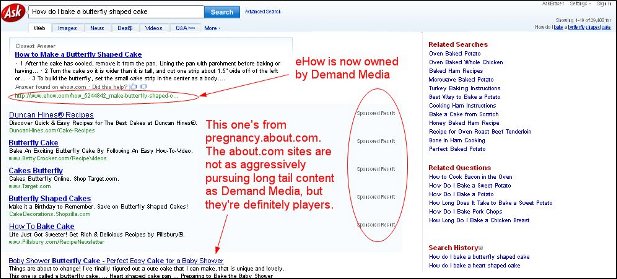
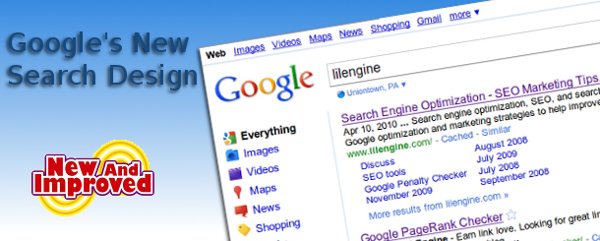
Most of us have noticed the new and improved Google search results pages by now. The biggest thing (in my opinion) is the new left hand column you get when you click the new “Show Options” link at the top of the results page. Whereas before if you wanted to search from a certain time frame, or make other refinements to the search, you had to go to the Advanced Search options page, now you can do a lot of those refinements right from your original results page.

Have you opened up Google Webmaster Tools recently? If not, you should, because you’ll find a bunch of new features. Your webmaster tools dashboard shows top search queries, links to your site, crawl errors, sitemaps, and more, as you can see in the screen shot. From the dash, you can get more information on any of these. The next screen shot shows all the webmaster tools options that show up in the left hand column of your dashboard.
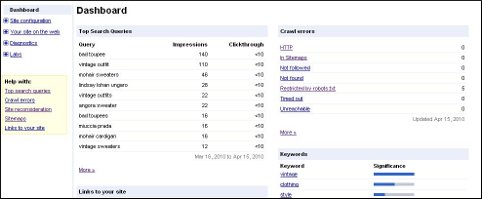

If, for example, you’re looking at your top search queries, which is located under the “Your Site on the Web” menu, you can go down to the bottom of the list where it says “more” and click. You’ll be taken to a page with a graphic representation of your queries by date, and a breakdown of individual search terms, and where you rank for them, as seen in the next screen shot. Also under “Your Site on the Web” you can find links to your site, keywords, internal links, and subscriber statistics.
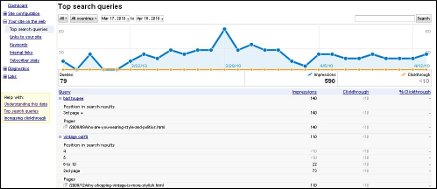
You used to only be able to see your site’s top 100 search queries, but now you can see many more. If your site ranks for more than 100, you’ll see page buttons at the bottom of the “Top Search Queries” list. And the graphic that appears of your top search queries used to be something you had to download and make into a chart yourself, so this new feature is especially handy. You also get a date range selector like what you have on Google Analytics so you can narrow down your data for a particular time period.
Under the “Site Configuration” menu, you can visit sitemaps, crawler access, sitelinks if any. These are the internal links that Google sometimes puts in search results, as you can see in the screenshot. There is also a “settings” section, in which you can set geographical targets, view your crawl rate stats, and parameter handling, which some webmasters use for more efficient crawling with fewer duplicate URLs. You don’t have to set any of these, because there are defaults, but some webmasters may want to. Some people have raised concerns that having country-specific sites will cause duplicate content issues, but this isn’t the case, so setting geographical targets will not harm your rankings.
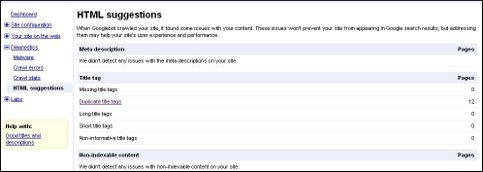
Diagnostics is another handy set of features. From the Diagnostics menu, you can check for malware on your site, crawl errors, crawl stats (which gives you Googlebot activity over the preceding 90 days), and HTML suggestions. The HTML suggestions page tells you if there are any problems with malware on your site, and a breakdown of title tag information, which includes duplicate or missing title tags, short title tags, non-informative title tags, and long title tags. It also alerts you if there is non-indexable content on your pages. Just FYI, the Malware diagnostic used to be under the “Labs” menu, but late in 2009 it “graduated” to the Diagnostics menu.
The Labs menu lets you play with new tools that may or may not stick around. One thing you can do is see what your site (either the homepage, which is the default, or a specific page, whose URL you type in) looks like to the Googlebot by choosing “Fetch as Googlebot” under the Labs menu. Once you click on “fetch” you’ll get a listing of your site and under Status, you should see “Success” and a green check mark. Click on “Success” and you’ll see the source information for your page as it is seen by the Googlebot.
You can make a Sidewiki for your site under the Labs menu, too. It may not be something you’re interested in, but a Sidewiki is a browser plugin for IE and Firefox that adds a universal commenting system for any and every page on the internet. To use it, you have to install the Google Toolbar for IE or Firefox, and Google says they’re working on a version for Chrome. When you install the toolbar with the Sidewiki in it, you go to a landing page telling you how to use it. Sidewiki entries are displayed with the most useful and high quality entries first, based on running the Sidewiki information through an algorithm to determine this. Toolbar haters will probably want to skip this one.
The Site Performance option under the Labs menu basically leads you through installation of the Page Speed browser add-on for Firefox that helps you figure how fast your site loads and what you can do to maximize load speed. Page Speed runs a bunch of diagnostics against a page and analyzes various performance parameters based on things like resource caching, upload and download sizes, and client-server round trips. You’ll get a red / yellow / green grading scheme for all the parameters, plus specific suggestions for making your page faster. It also does some automatic optimization such as compressing images and “minifying” JavaScript code.
This is very valuable information, and there are even suggestions and hints on how to do things like speeding up your site by installing a Firefox add-on called Page Speed. Honestly, you could spend half a day going through the data you now get from Webmaster Tools and probably come up with a dozen tweaks to your site that will fine tune its performance. Initial reaction to the new tools – particularly the top search queries – has been very positive.

You’ve probably heard that site speed is now one of the more than 200 factors that Google is using to rank search engine results. The reactions range from, “Everybody panic!” to “This will make it easier for the big sites to stomp the smaller ones,” to “Well it’s about time.” I actually don’t think that most smaller sites are going to suffer because of this change. Sure, the big guys can afford to have their sites hosted on faster, dedicated servers, but some of the worst sites when it comes to speed are sites of big cheeses, particularly those who sell expensive things. You can see in the screen shot the yawn-inducing graphic you have to sit through before you can actually do anything on one such site (a luxury watchmaker). If anything, it will be the sites that are electronic monuments to big egos that are going to suffer most. There are a lot of users like me who see that “Loading, please wait” widget as the perfect reason to click the “Back” button.

If you read Matt Cutts’ blog post for April 9, you’ll learn the reasoning behind Google’s decision, and why Cutts doesn’t think it’s going to be that big a deal. Here’s a recap.
Why Matt Cutts Doesn’t Think It’s Going to Be That Big a Deal
Actually, a lot of the hand wringing over this is being done out of not precisely knowing things like how “site speed” is measured. Google isn’t terribly forthcoming about telling people how site speed is figured and weighted, so there are still questions surrounding this new ranking factor, such as:
Google wants you to speed up your site. They did some experiments where they deliberately slowed search results page loads to see how users would respond. They found out that slowing down a page by 100 to 400 milliseconds produces 0.2 to 0.6% fewer searches. Not only that, searches dropped even more over a period of weeks, and, even if the page loads returned to normal, it took users a couple of weeks to return to their normal search habits!
And sure, Google wants you to do lots of searches because the more you search, the more money they make. Therefore Google likes sites to load quickly so you won’t become frustrated and stop searching.
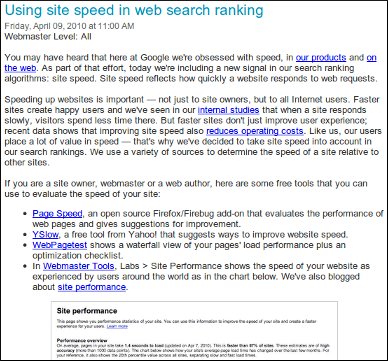 The first thing webmasters should do is to use some of the official tools for measuring site speed that Google offers. Go to Google’s Webmaster Central blog post on the topic of site speed (also see screen shot) and try out some of the speed measuring tools they suggest, including the Google-approved Firefox / Firebug add-on called Page Speed, the Yahoo! tool called YSlow, and WebPagetest to show your page’s load stats and generate a checklist for optimization. Google’s Webmaster Tools, under Labs, then Site Performance will show you how fast your website loads to users around the world.
The first thing webmasters should do is to use some of the official tools for measuring site speed that Google offers. Go to Google’s Webmaster Central blog post on the topic of site speed (also see screen shot) and try out some of the speed measuring tools they suggest, including the Google-approved Firefox / Firebug add-on called Page Speed, the Yahoo! tool called YSlow, and WebPagetest to show your page’s load stats and generate a checklist for optimization. Google’s Webmaster Tools, under Labs, then Site Performance will show you how fast your website loads to users around the world.
Add a cache plugin to your site. It creates static versions of posts so that the pages don’t have to be recreated every time from scratch. Instead, an HTML file, perhaps with javascript for dynamic elements is displayed, which is faster for users. Other suggestions for speeding up your page, which you can read more about at code.google.com, include:
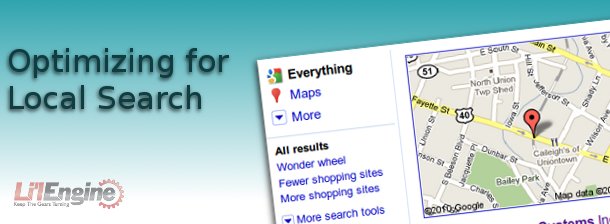
Local search engine listings may be little more than an afterthought to some webmasters, but they are a source of business that you shouldn’t ignore. Optimizing your site for local searches and making sure you’re listed in the local versions of the major search engines is a smart move, and doing so is fairly quick and easy. The three biggies in local search are Google Local, Yahoo! Local, and Bing Local.

Paying for irrelevant clicks in your pay per click (PPC) ad campaign is frustrating, but is there anything you can do to minimize the chances of this happening? Yes, in fact. Three of the biggies are the use of negative keywords, exact match, phrase match, and broad match.
Negative keywords have a major impact on your click-through rate (CTR) and therefore, your campaign’s return on investment (ROI). When you use the “phrase match” and “broad match” options setting up your AdWords campaigns, you should include negative keywords as well. It’s easy to do. Go to your AdWords account and click on the “Keywords” tab. You have the option of adding new keywords, as you can see in the screen shot. Notice at the bottom of the screen shot, how you can designate keywords as:
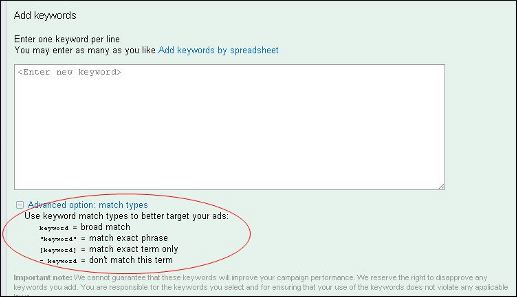
Setting up negative keywords by placing a minus sign in front of them lets you filter out identical terms that can have very different meanings. For example, suppose you sell photographs of foxes (Work with me here, OK?). Well, if someone searches on fox photos thinking they’re going to get pictures from The Simpsons on Fox television network, you’ll be paying for their irrelevant clicks. Therefore, you want to use negative keywords like “television” and “network” to limit the number of times an ad for your photographs of foxes appears on a page when someone wants pictures from the TV network.
Judicious use of negative keywords can help improve the quality score of your keywords. A number of factors influence your keywords’ quality scores, including its general performance. Bottom line: a higher quality score makes your keyword trigger ads at a lower cost per click and positioned higher. Your CTR is the most important aspect of your quality score. A lot of “accidental” clicks on your ads can lower your click through rate. By using negative keywords, you’ll have fewer ad impressions, but fewer “false positive” clicks on your ads.
Finding the right negative keywords is a very important parts of a PPC campaign, but it can be complicated. One way to select negative keywords is to use your regular keyword research. The Google Keyword Tool will show you the keyword phrases that are more relevant and less relevant to your products and services. But relevance doesn’t always mean they match the searcher’s intent, and that’s what negative keywords help you with.
You’re not charged for negative keywords, and there isn’t a penalty for having a long list of negative keywords, so it’s worth your while to do some hard core keyword research and compile a list of negative keywords. You can have up to 10,000 negative keywords per campaign, so you’re not likely to use them all up. (Yahoo lets you have 250 negative key words and phrases, and Microsoft AdCenter limits you to 1024 characters worth of negative key words and phrases.)
Google’s Keyword Tool isn’t the only place that can help you come up with negative keywords. You can use server log files to find info on queries that lead people to your site. Heck, you can even use a thesaurus if that helps. Sometimes common sense helps you think up good negative keywords. Suppose, for example, your products and / or services are only available in certain geographic areas. You can use names of places your stuff isn’t available as negative keywords. For example, if you paint houses in Portland Maine, you don’t want to be paying for the clicks you might get from people in Portland, Oregon. Therefore, you can use “Oregon” as a negative keyword to keep out some irrelevant clicks. So the takeaway from this is that even though negative keywords will cause you to have fewer ad impressions, the CTR and quality score will go up, and so will your return on investment.
It’s exactly what it sounds like. If you want your ad to show up when someone searches on “baseball caps” but not on just baseball or just caps, then you specify your keyword in brackets when you choose your AdWords keywords: [baseball caps]
If you choose [baseball caps], your ads might show up when someone searches for baseball caps, but it will not show on searches like “baseball cap,” “blue baseball caps,” or “buy baseball caps.” Now, while this will cut down on the number of ad impressions, clicks, and conversions, those clicks you do get will likely be highly targeted toward your service.
Suppose that you chose “baseball caps” as one of your keyword phrases for your ad campaign. Your ad is eligible to show up on searches such as “buy baseball caps,” “baseball caps giveaway,” or “green baseball caps.” They will not show up on searches like “caps for baseball,” “baseball cap,” or “baseball hats.”
This is a more targeted approach than a plain broad match, but it’s more flexible than exact match ([baseball caps]).
Broad match is the default option. If you used the phrase baseball caps with no bracketing, no quotation marks, no negative sign, your ad could show up on searches for “baseball,” “caps,” “baseball hats,” or “caps for baseball.” You’ll get more click throughs, but you’ll get more erroneous click throughs as well. Now it’s possible that someone will be searching the term “baseball” wanting to find certain statistics, click on your ad, and be smitten with it enough to buy one of your baseball caps.
Just to get everyone on the same page, let’s review the concepts behind Google AdWords, specifically the concept of “pay per click,” or PPC. PPC is an advertising model. If you’re an advertiser, you pay the site hosting your ad only when somebody clicks the ad. To buy search engine ads, advertisers bid on relevant keyword phrases, whereas content sites usually charge a fixed price per click. Cost per click is how much the advertiser pays each time someone clicks the ad. So if a host site doesn’t generate any click-throughs, the merchant incurs no cost. Sites selling PPC ads display certain ads that are relevant to keyword queries on an advertiser’s keyword list.
 The Google AdWords Conversion Tracking Guide is a PDF guide you should at least bookmark, or maybe print out for reference. Conversion tracking works like this. It places a cookie on the computer of the user who clicks on your ad. If the user then reaches one of your conversion pages, the user’s browser sends the cookie to one of the Google servers. A conversion tracking image will be shown on your website. When this match is made, it’s considered a successful conversion. For example, see the ad for Klogzilla.com in the screen shot? If someone were to click on that ad, Klogzilla would have to pay Google a certain amount based on what keyword brought the person there. Some percent of that money would be shared with the website owner. If Klogzilla had the requisite tracking code in their website HTML, they could track these things.
The Google AdWords Conversion Tracking Guide is a PDF guide you should at least bookmark, or maybe print out for reference. Conversion tracking works like this. It places a cookie on the computer of the user who clicks on your ad. If the user then reaches one of your conversion pages, the user’s browser sends the cookie to one of the Google servers. A conversion tracking image will be shown on your website. When this match is made, it’s considered a successful conversion. For example, see the ad for Klogzilla.com in the screen shot? If someone were to click on that ad, Klogzilla would have to pay Google a certain amount based on what keyword brought the person there. Some percent of that money would be shared with the website owner. If Klogzilla had the requisite tracking code in their website HTML, they could track these things.
To do conversion tracking, you place a few pre-written lines of code into your website’s HTML. With AdWords, you need access to your website’s code and your Google AdWords account. The Tracking Guide referenced above offers instructions for the insertion of the lines of code into these web programming languages:
One hour (give or take) after you’ve successfully installed the code into your site, you can see your conversion tracking reports from your AdWords Campaign Summary page and Report Center. You can look at conversion reports for individual keywords and key phrases too. Statistics on users who click one of your Google AdWords ads and completes a specified conversion, such as a sign-up, a page view, or a purchase, can be seen in your AdWords reports. You get the snippet of code when you sign up from the AdWords Conversion Tracking Page, under the Campaign Management tab.
As Magnum, P.I. used to say, I know what you’re thinking, and you’re right. This can rapidly become complicated. As if you weren’t spending enough hours running your business and updating your website, now if you want to figure out where your AdWords dollars are doing their best, there’s all this tracking to deal with.
Well, there are search engine marketing firms and AdWords account management consultants that can do this stuff for you. The idea is that they know how to manage your AdWords campaigns so that they reach the people who want to buy your product or service. The Google Advertising Professionals program certifies those who pass a qualifying exam and meet other qualifictions.

If your budget doesn’t run to hiring consultants yet, Google also provides its own software for AdWords account management called AdWords Editor, which you can see in the screen shot. Access it at http://www.google.com/intl/en/adwordseditor/. You can also sign up for something called My Client Center, which is part of the Google Professionals suite, but which you can use even if you’re not a certified Google Advertising Professional. It’s a shell account that links up all your AdWords accounts in one location, so you don’t have to log in and out to switch AdWords accounts. This is great for the advertising professional who manages AdWords accounts for several clients too. You can generate multiple accounts at once, invite new clients to have their accounts managed by you, and generally have dashboard access to your or your client’s AdWord account(s).
To be able to use this, go to the Google Advertising Professionals sign-up page at https://adwords.google.com/professionals/ and sign up for free. You’ll be given a My Clent Account setup as soon as you enroll.
In fact, if you have time (I know, fat chance, right?), signing up with the Google Advertising Professionals program and gradually working your way through it will make you an expert on pay per click management of AdWords accounts and help you use your AdWords dollars optimally.
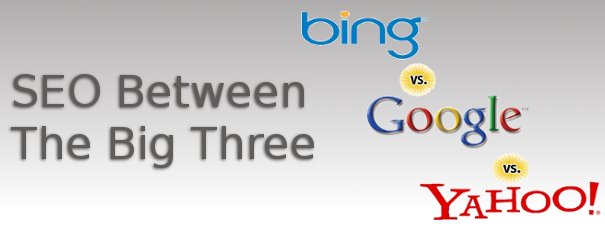
The fundamentals of SEO apply regardless of which search engine you want to rank in, but each of the major ones has some finer points, so let’s get right to them.
You may have heard that participating in Google AdWords would penalize your site in other search engines, but Yahoo! insists that this is not the case. They really have nothing to gain by dropping sites that are relevant, and if they did, they’d be cutting off their nose to spite their face. But the age of your domain is important because a longer track record ups a site’s relevancy. It’s only one score, and it’s one you can’t do much about, but it’s something to keep in mind: SEO is a long term idea.
Yahoo! suggests registering domains for more than one year at a time. It gives your site a long-term focus and keeps you from accidentally losing a domain because you didn’t find the email that it was time to renew. They also suggest you should buy the same domain name with and without dashes. This will keep you from losing so-called type-in traffic. However, all SEO pundits say that the more dashes, the harder it is to type in, and the more spam-like it will look, so don’t get carried away.
Like with Google, with Yahoo!, relevant inbound links from high quality pages are gold. This is one of the hardest parts of SEO, but it’s one where there really aren’t many shortcuts. You want links from sites that belong to the same general neighborhood of topics as yours. If you have a site that sells organic flour, a link from a fishing tackle site isn’t going to help you much, if at all. And when it comes to giving out your own links, be careful here as well. If you link to a lot of sites that are or could be penalized, you could be hurting yourself by association. If you sell text links, check out every site that buys from you to make sure you’re not endorsing spam, porn, or other content that search engines frown upon.
Make use of Yahoo Site Explorer to see how many pages are indexed and to track the inbound links to your site. The first screen shot shows the results of the analysis of one site. As you can see, there are 503 pages on the site, and 5,838 inlinks, each of which you can explore further. To maximize crawling of your site and indexing of pages, publishing fresh, high quality content is the key.

There have been some case studies about what Bing looks at compared to Yahoo! and Google when ranking sites. When ranking for a keyword phrase, both Bing and Google look at the title tag 100% of the time. Prominence is given a little more weight with Bing than with Google, while Google favors link density and link prominence more than Bing. Bing evaluates H1 tags, while Google does not, and Google considers meta keywords and description while Bing does not. What that all boils down to with Bing is that having an older domain and having inbound links from sites that include the primary keyword in their title tags (another way of saying relevant inbound links) are keys to optimizing for Bing. Like optimizing for the other major search engines, link building should be a regular, steady part of your SEO effort.
With Bing, it’s easier to compete for broad terms. With Bing, keyword searches result in Quick Tabs that offer variations on the parent keyword. This has the effect of bringing to the surface websites that rank for those keyword combinations. The goal is for content-rich sites to convert better than sites with less relevant content. The multi-threaded SERP design brings up more pages associated with the primary keywords than would come up with a single-thread SERP list. Also, Bing takes away duplicate results from categorized result lists. This allows lower ranked pages to be shown in the categorized results.
The Bing screen shot shows the results for a search on “video cameras.” To the left is a column of subcategories. Results from those subcategories are listed below the main search results. While there are some differences to SEO for Bing, the relatively new search engine isn’t a game changer when it comes to SEO.
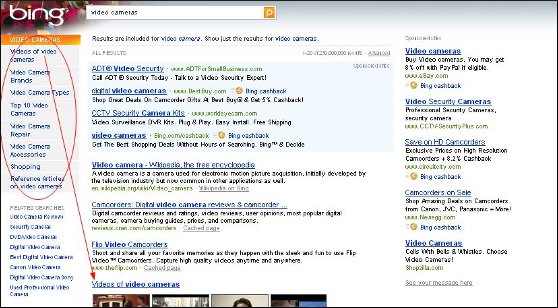
It sometimes seems as if SEO is synonymous with “SEO for Google,” since Google is the top search engine. And it also seems that when it comes to SEO for Google, a lot of the conventional wisdom has to do with not displeasing the Google search engine gods by doing things like cloaking, buying links, etc.
The positive steps toward SEO with Google include keywords in content and in tags, good inbound links, good outbound links (to a lesser extent), site age, and top level domain (with .gov, .edu, and .org getting the most props). Negative factors included all-image or Flash content, affiliate sites with little content, keyword stuffing, and stealing content from other sites. It isn’t so much that Google wants to seek out an destroy sites that buy links, but they want the sites with actual relevant, fresh content to have a shot at the top, and with some sites trying to game the system and get there dishonestly, Google has to find a way to deal with these sites without hurting the good sites.
In fact, Google wants users to report sites that are trying to cheat to get to the top of the search engines. On the screen shot, you can see a copy of the form found at https://www.google.com/webmasters/tools/spamreport?pli=1 for reporting deceptive practices. You have to be signed in to your Google account to use this, by the way. They want to get away from anonymous spam reports.
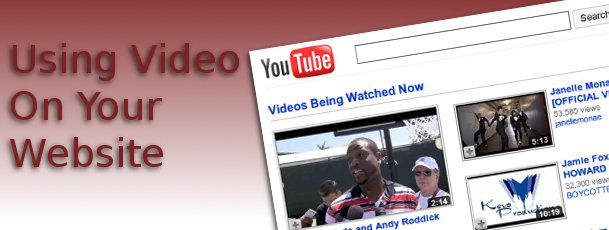
If you’re not using video on your website, you should be. Any business can use video on their website to improve their branding and profits. In fact, small businesses have been quick to adopt video on their websites. The number of small businesses using video on their websites at the end of 2009 was four times as great as only one year earlier. Video capability was the single fastest growing feature small businesses added to their websites. On-page video is one of the best known ways to engage an audience and it’s also a way to position your business right in front of those who are seeking out your product or service using search engines.
You can use video to showcase how to use a product, to show testimonials, to highlight a product’s features, or to upload clips made by customers about the product. Since search engines used to have to ignore video, everyone pretty much dismissed video. But now Google’s universal search format, which includes videos, news, blogs, maps, and other so-called vertical search content is making video more relevant than ever. Another factor driving the importance of video in SEO is the increasing saturation of broadband internet coverage. And there’s the simple fact that people like watching short videos. We’ve all watched funny cat or “fail” videos on our coffee break. Given all this, it makes sense to do what you can to optimize video content for search engines.
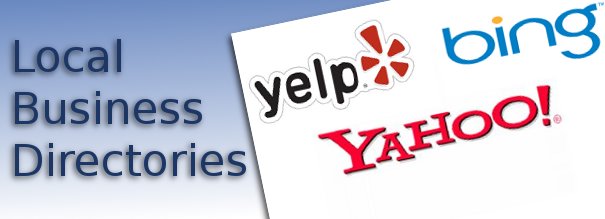
Local internet business directories can help your business out locally. While you may consider your business to be web-wide, there’s nothing wrong with getting the support of the local population, particularly if your business has a bricks and mortar presence too. Even if you do all your work over the web (such as translating documents or writing software apps), there’s no telling who might be living in the same area as you who needs exactly the skills your business offers. Don’t miss out on local attention thinking that just being on the web will catch everyone. It doesn’t take long to sign on to local business directories, and in most cases it’s free. Three local directories you should check out are Yelp, Yahoo! Local, and Bing Local.
Isn’t it a rush to get positive feedback about your business? Well, those compliments can be used to your advantage if you use them wisely. The goal is to not only get compliments, but also get real recommendations that other potential customers can see. That’s why local directories like Yelp are so helpful. yelp.com lets you gather good reviews about your company from customers. It is easy to get started.
First, register your business on Yelp by using its business profile directory. You can do this for free at https://biz.yelp.com/signup (see screen shot). The next thing to do – and this is important – is to review other companies and services you’ve used yourself, whether it’s a mechanic, a veterinarian, a restaurant, or some other local business. Keep your reviews positive, which means only reviewing businesses about which you feel positive. If you appear troll-like, you wont’ gain any credibility.
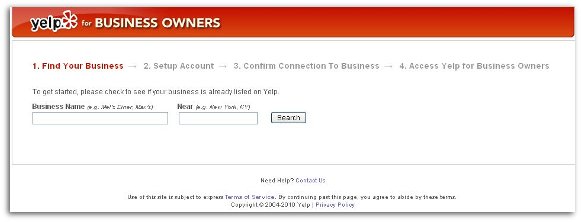
The next thing to do is to invite colleagues and friends to comment on and review your business. You don’t want a flood of these to come in at once. Yelp dislikes spam, and may construe a dozen glowing reviews your first day as such. Another thing you can do is ask your reviewers to review other local businesses as well so Yelp doesn’t think you’re coercing people.
You should build a good profile on Yelp, and you need to stay active in your community by reviewing other businesses (Many will reciprocate.) and make your listing more than just a boring list of your services and business hours. Let all your customers know that you’re on Yelp and that you’d appreciate a review. This is a good thing to include in your business’s email newsletter if you have one. The more you use Yelp’s social networking features, the wider a group of people you’ll connect with, boosting your presence on Yelp even more.
Claiming your Yahoo! Local profile will expose your business to local clients, and you can use the same information and photos that you use on Google Local (if you have it). You can edit your Yahoo! listing any time with changes to business contact information, business hours, and other important information. You can, if you choose, invest in a local enhanced listing. This lets you add to the basic listing your company logo / tagline, up to 10 photos, a more detailed business description, two customizable links for coupons, inclusion in up to 5 categories. You can check out the kind of things you get from an enhanced listing from the screen shot.
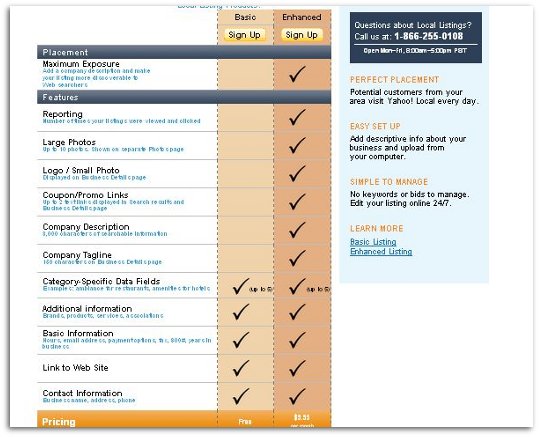
But even the free listing will bring more business your way. Yahoo! Local only lists businesses that serve designated geographic locations in the U.S., so if you’re online-only or statewide, then you can’t list there. You can improve your chances of your listing being accepted by carefully reading the basic listing requirements first and follow them. Assuming you are able to list there, ensure that the name of your business and your contact information is shown on every page of your website. If you don’t have a bricks and mortar store, clearly show how potential customers can make an appointment with you. Keep in mind that it may take up to five ddays for your listing to show up on Yahoo! Local, so don’t resubmit your site if it hasn’t been at least five days. You can check on the status of your listing on the Yahoo! Local Listings website.
Setting up your local listing on Bing is easy and it’s free. The first thing to do is to go to the Bing Local Listing Center, where you can create a local listing. When you start creating your account, Bing asks you for your Windows ID. If you don’t have one, you’ll have to create one, or you can create one by going to this link before setting up your listing on Bing. You’ll have to enter contact and business info, additional phone numbers, email addresses, hours, etc. You’ll also get to fill out a long section for information like your company’s tagline, brands, affiliations, and a bunch of other things. Try to fill in as many fields as possible, because it’s to your benefit.
You can then choose up to six categories in which to place your business based on your associated keywords. Bing has good local search refinement, so you want to take advantage of this by choosing as many categories as you can. After you finish this, you’ll have to review your business listing and check that the push pin locator is correct. If so, submit it and you’re done.
You might think that these local directories don’t make much of a difference, but you’d be surprised. Having complete listings on all the local search providers is good for your business and gives your local customers (and potential customers) another way to find you. Setting up accounts on Yelp, Yahoo! Local, and Bing Local does not take very long at all, and it’s a great way to point more people toward your business.